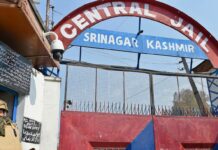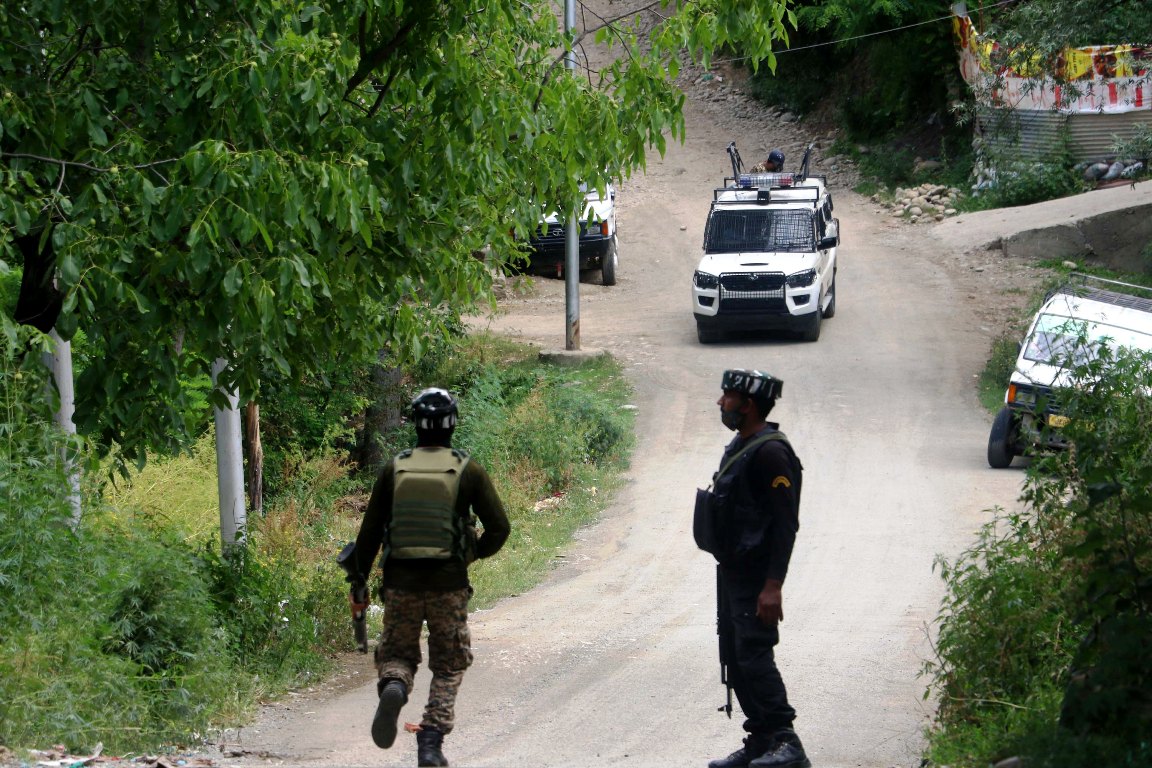Srinagar: Kashmir’s former corps commander and intelligence chief have suggested a grand mix of cultural revivalism and controlled intervention in faith-related issues to contain “radicalism” in Kashmir. Let Gen (Retd) Syed Ata Hasnain and S M Sahai were speaking at 19th Asian Security Conference held at Institute for Defence Studies and Analyses (IDSA) in Hyderabad on the topic ‘Combating Terrorism: Evolving an Asian Response’
Hasnain who is considered a Kashmir hand has suggested that the system must look for new role models. He was speaking precisely on creating a new narrative for Kashmir. Offering his assessment of the situation, General Husnain said that the separatists have used stone as “symbol of non-violence” to fight a “superior adversary” and it is the strategy of deep state of Islamabad.
The general said that the street turbulence is the new norm and Fridays are rarely peaceful. He said that stone pelting is being used to create “a level of desperation” in the security grid. He also said that the fear of death has virtually disappeared even though there is no suicide attack: there have been only three suicide attacks in the history of Kashmir militancy even though Fidayeen attacks are a norm. Stone pelting, he said, is being used to “intimidate” security forces on encounter spots and help militants escape.
Former corps commander said that mosques in Kashmir are the new epicenters of separatist vigilantism where even bureaucrats are reporting every morning. He regretted that while the security apparatus has “winter and summer strategies” it lacks a long term and medium term strategy about, for instance, what has to be there in 2025.
Offering his suggestions, General Husnain said mosque systems in Kashmir needs to de-politicized, there is a requirement of engaging youth through music and sports and the madrassa structure must be integrated with the curriculum of the day. He said politicians will have to engage youth and get ready to listen to their criticism. He said there is a huge disconnect between the Muslims in India and Muslims in Kashmir which Ulemas – some of whom were in the audience – must bridge.
“We need to look for role models and Kashmir role models are something difficult to find,” the General said. “Off late I am told that Shah Faesal, an IAS topper who used to be a great icon for the youth, has even lost his appeal,” Hasnain citied in his speech.
(Interestingly, Shah Feasal sounded excited on the observations made by the commander. “Congratulate me. It has taken me a lot of hard work, many antics and at times even theatrics, to wash off the taint. I am so happy today that I have done it and it has been so nicely acknowledged. As I go back to my work now, can we have the nominations please,” Shah Faesal wrote on his FB wall, late last night. “(Mein bhi bada ajeeb hun, itna ajeeb hun ki bas…khud ko tabaah kar liya, aur is ka malaal bhi nahi. John Elia.)
Watch: SA Husnain Speaking
Advocating for the promotion of music and development contacts with religious leaders he said: “My experience tells me that the contact and communication with the highest level religious leaders like Jamaat-e-Islami Chief needs to be developed, which will make a great difference.”
“Speak to him; be in communication with him, all the time. Be in communication with Ameer-e-Jamaat,” Hasnain said.
Mentioning Burhan Wani, the top militant commander whose killing triggered a seven-month long uprising in Kashmir, Hasnain said Tral has also given more than 500 JAKLI soldiers to the Indian Army, and you can’t find any faults in these soldiers.
Following Husnain, IGP S M Sahai, told the army general that now Burhan’s successor is the “new role model” in Kashmir “unfortunately”. Emphasis in Sahai’ speech was that situation in Kashmir is that of radicalization of the youth and revival of Sufism was an antidote.
“Sufism is not another part of Islam it is very part of religion. You will not find its legitimacy in Quran but it is an evolutionary process that will be hopefully discussed,” Sahai said.
His presentation included a PP presentation showing slain Hizbul Mujahideen commander making his first speech. “He starts talking about Kashmir cause but ends up talking about Khilafat. This is how entire movement in Kashmir has changed,” Sahai said. “Azadi movement has become narrative about Khilafat and this is the radicalization of the Aazadi movement which is coming up as a very dangerous thing.”
“We need clarity that what we are facing. Confusions between the political movement and the religious undertones need to be understood very clearly,” he addressed to the audience. In another presentation showing Burhan’s successor, Sahai told Husnain: “unfortunately there is a role model and is kind of inspiration that youth are getting.”
While talking about the youth intervening at the encounter sites and “getting themselves killed,” he said, “this is actually what is happening on the ground and administration will have to look closely.”
Stating the root cause of the problem in 1997 when there were changed in the global politics in Iran, Russia and Afghanistan he said that “Madrasas’ in Pakistan were being used to train and churn out Mujahideen and Jihad as a concept was being used as a political tool against the Russians.” Islamisation in Pakistan, during the hanging of Bhutto was change in Kashmir, he said.
At that time militant outfit setup in Afghanistan were deliberately introduced in Kashmir and that led to change in the narrative change, he said “It is then that the Jama’at-i-Islami and other Islamic organizations raised their head ..and started process of radicalization,” Sahai believes. “That is the time when Kashmir movement starts shifting from political to quisi-religion movement,” he asserted.
Watch SM Sahai speaking
Analyzing that the change resulted in the political and administrative vacuum in Kashmir, “resulting in the enhancement of radicalization,” he said, “whole Kashmiri question got diluted and Kashmiriat itself came under attack.”
He goes on to quoting verses of Quran and states that some lies are being misused and other that go against are being over looked at. He talked on the different aspects of the Islam quoting different acknowledged personalities.
Asserting that social media played essential role in Kashmir he said, there was “failure of subsequent governments in comprehending the impact of social media.” He stated that by getting connected to outside world through social media, “youth in Kashmir feel deprived so they disburse that anger on authorities.”
Advocating for chair of Sufism in the academics he said “governments have shy away from the relationship of culture and relation.”
“Sufism is part of the Kashmiri culture and this is not diluting the religion,” he said
But he cautioned that this should not end up in making one against other in Kashmir.















